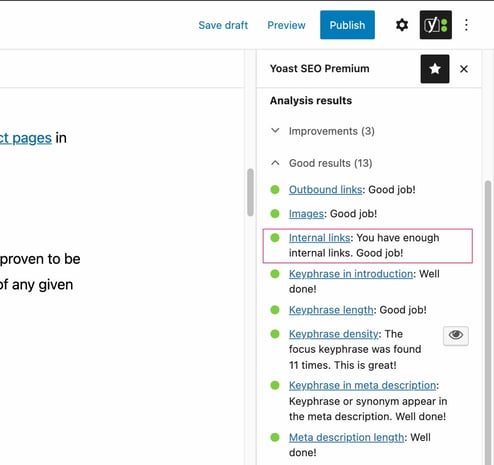Home »
Anyone who works in the SEO space knows how difficult it’s getting day by day to rank higher in Google Search Engines Page Results (SERPs) especially post Helpful Content Update (HCU) and March 4, 2024 Spam update.
With so many elements to cater for it’s essential that SEOs take care of all the On-Page and Off-Page SEO fundamentals to ensure you give yourself the best chance of ranking.
One of the more underutilized implementation approaches in the On-Page sphere is internal link building in SEO.
But this is surprising, to say the least…
As per Zyppy, URLs with a larger number of anchor text variations from internal links are highly correlated with more Google search traffic.
Heck…
Who wouldn’t want more SEO traffic and an increase in their bottom line?
With the SEO industry forecasted to be worth almost $218 billion by 2030; it’s time SEOs stop undermining their chances of winning by focusing on their SEO Internal Link Strategy.
In this guide, we’ll be covering all the components you need to know and implement Internal Link Building in SEO for your business.
What is internal link building?
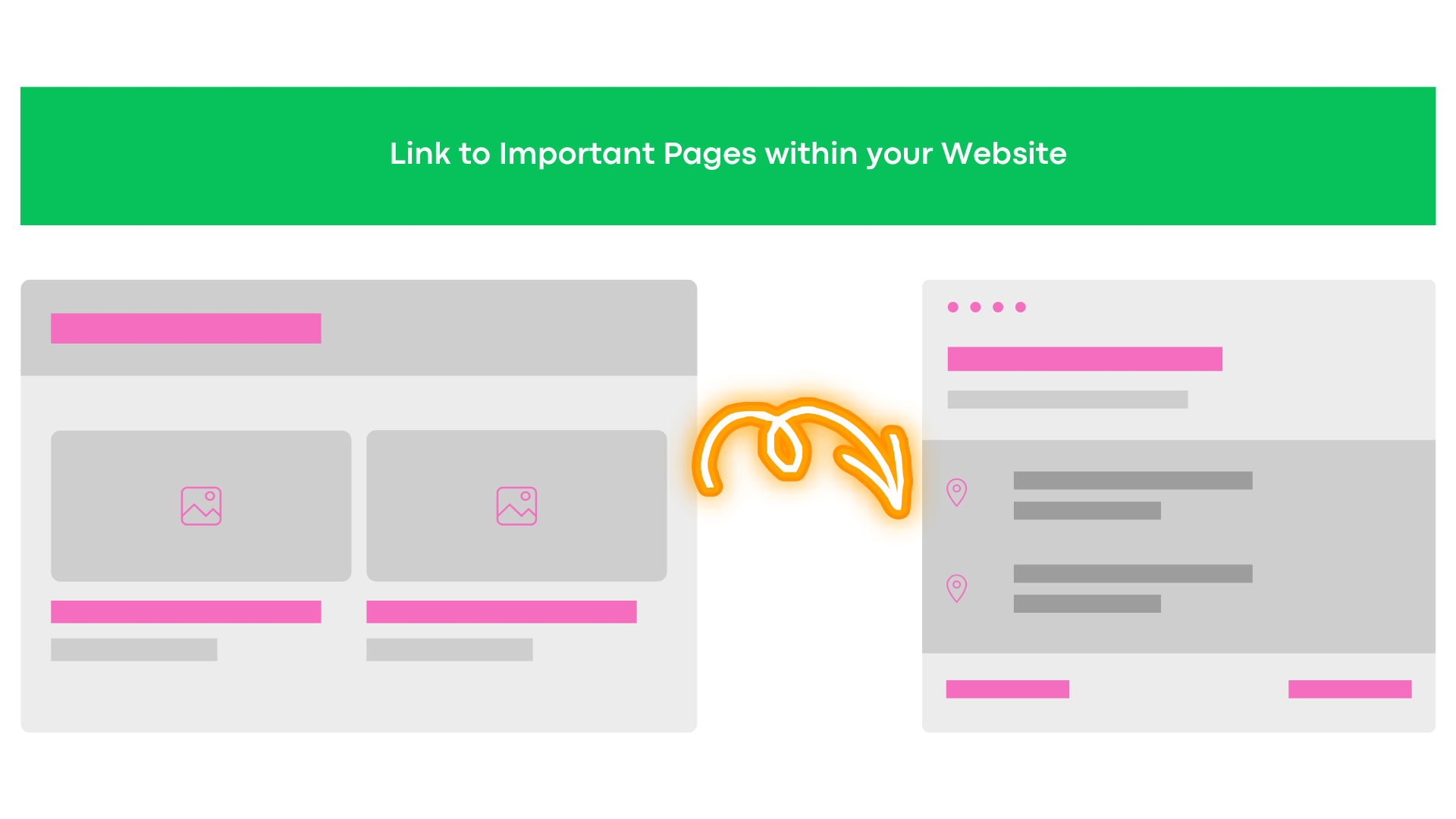
The Power of Internal Linking for SEO is often undervalued.
Yet, it’s the foundational block for amplifying your content’s performance and visibility on search engines like Google.
Internal links are not just navigational aids; they are strategic tools that guide users and search engines alike, creating a well-structured map for your website’s content.
This internal linking structure of a website allows you to prioritize key web pages, distributing link value where needed.
So understanding the workings of SEO Interlinking ensures your content gets the spotlight that it deserves.
But does adding lots of internal links improve SEO?
It’s not about just linking for the heck of it.
It’s about creating a web of content that’s easy to navigate, both for search engines like Google and your target audience.
By having an SEO Internal Linking Strategy in place, you’re not just optimizing for SEO; you’re enhancing user experience, leading to increased engagement rates and potential conversions.
4 Reasons that Highlight the Importance of Internal Linking for SEO
Helps Google Index Your Website
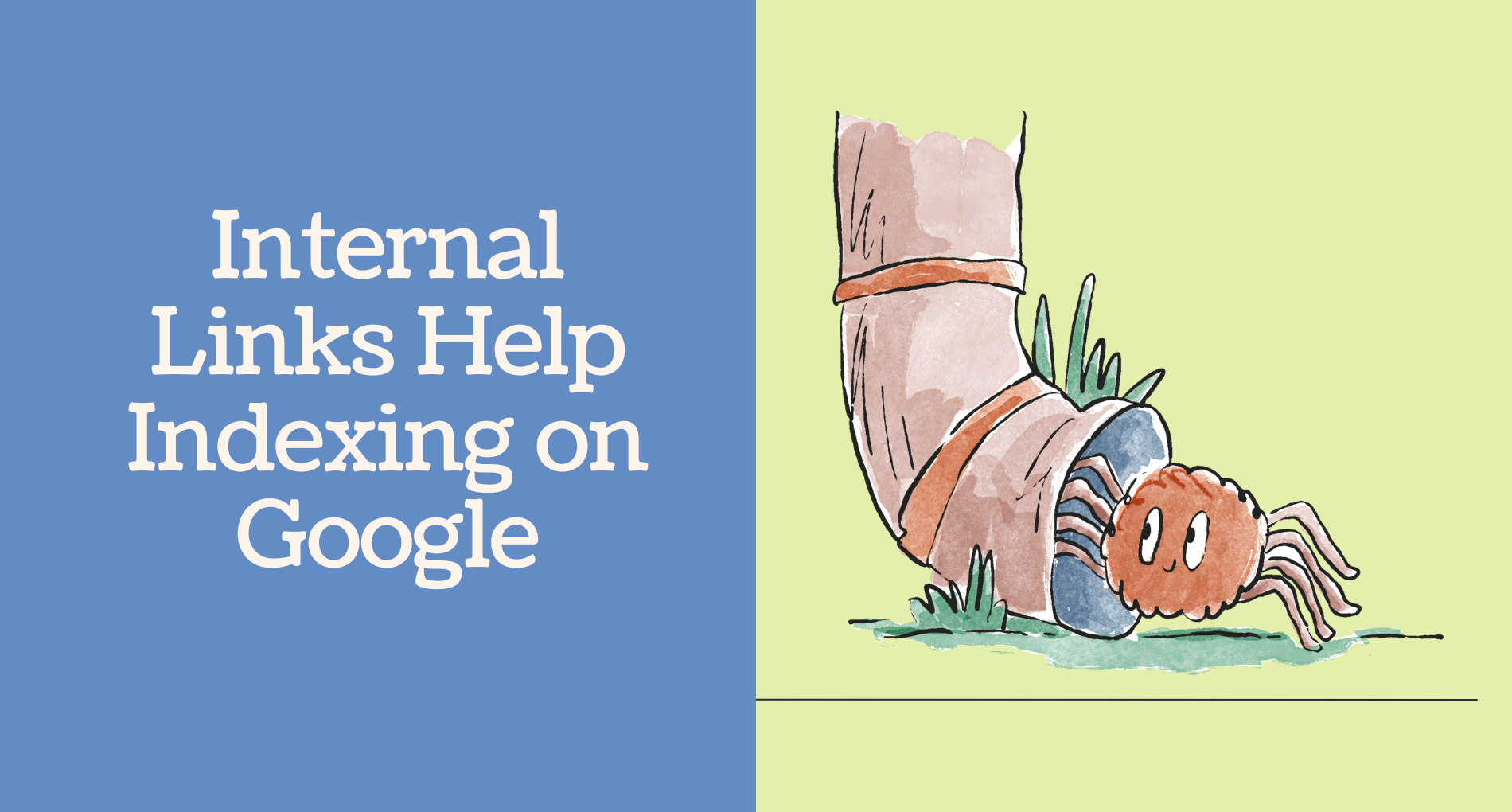
Internal link building in SEO plays a pivotal role in assisting search engines like Google and Bing in discovering and indexing websites.
By providing a clear pathway from one page to another, internal links help search engines comprehend the relationship between different pages and ensure all your content is indexed.
Internal Link Building in SEO helps Distribute the Strength of the Website to Internal Pages
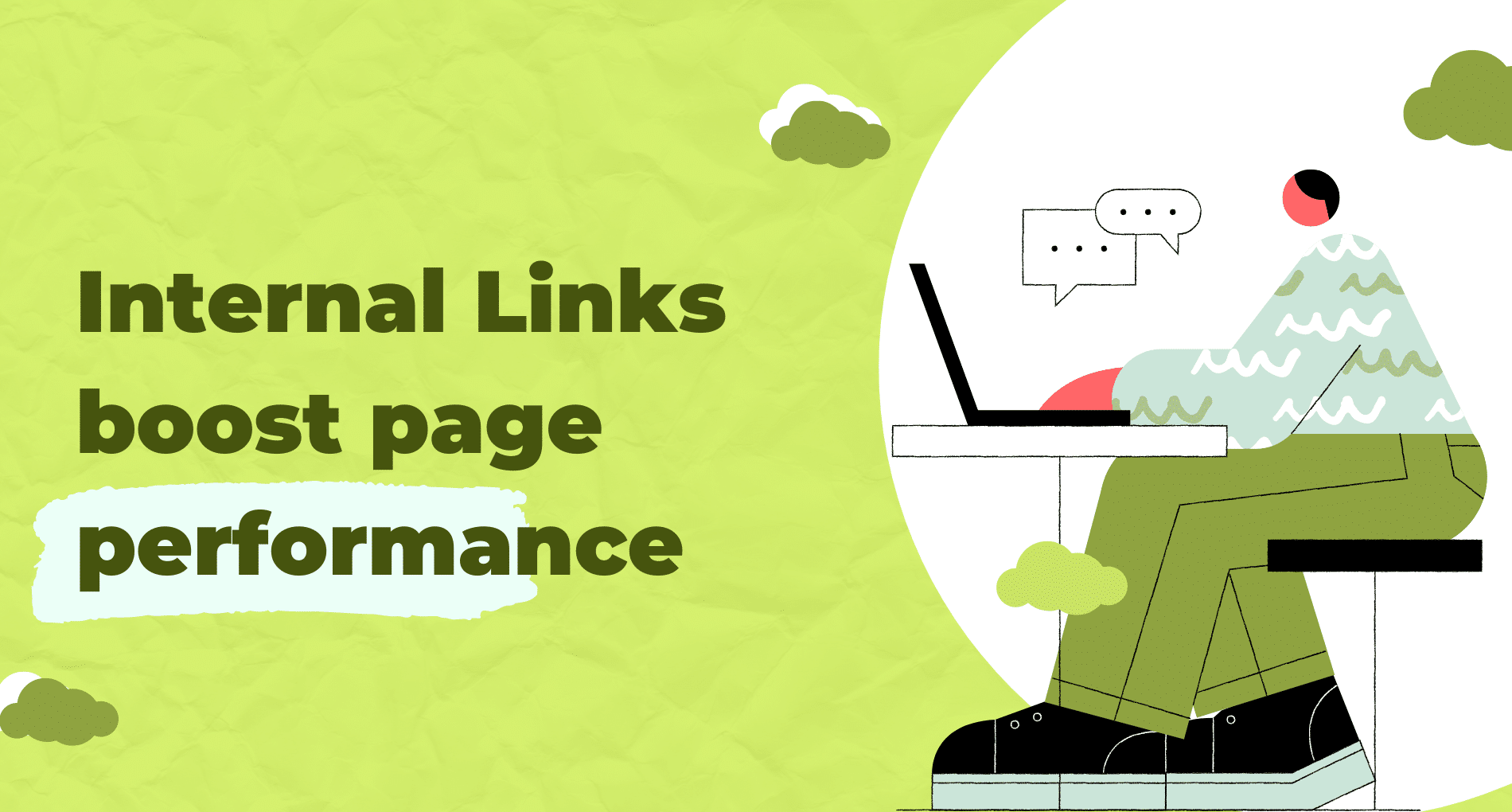
Each website has a website page authority.
This is the authority of the content and backlinks that your website accumulates over time.
When you internally link pages on your website you are essentially passing that link authority or internal link juice SEO to other pages on your website.
When you pass the link juice to relevant and important pages on your website you give your newer pages the benefits of internal linking in SEO from those efforts.
Increase Backlink Earning potential of Deeper Content Pages
By placing internal links from high-ranking pages to deeper pages within your website structure, you can increase the chances of increasing the visibility of these pages and make them more accessible for both search engines and users.
The challenge is when deeper content pages exist these are pages with no inbound internal links.
This effectively keeps them on the periphery of being noticed on search engines.
When you internally link from already ranking pages that are contextually relevant links, you give these deeper pages a special push in the right direction.
This can lead to more organic traffic which can lead to potentially an increase in external backlinks citing your resource.
A win-win to increase your website’s SEO value!
Anchor Text Internal Linking Optimization is good for SEO

Having internal links pointing to your page with natural anchor text provides additional relevance to search engines.
Including relevant keywords in the anchor text helps search engines understand the content of the linked page, enhancing its visibility and improving the chances of ranking for those specific keywords.
How to add an internal link in WordPress?
Adding internal links in WordPress is a simple process. There are only three steps to get you started.
Highlight the anchor text for internal links
The first step is adding an internal link highlighting the anchor text.
Simply toggle your mouse over the text and move on to the next step.
Click the Link Icon
Once you’ve highlighted the anchor text, the next step is to click the link icon in the WordPress dashboard.
The icon looks just like a chain link.
We’ve added the image of the Link Icon and highlighted it for your ease.
Paste the Internal Link URL
Once you click the link icon, a box will appear prompting you to insert the link into the text box.
Simply submit the URL and your internal link is now published.
WordPress also provides the option to open the internal link in an external tab if you want it to be that way.
You can also automate this process through WordPress Internal Linking Plugins like Link Whisper.
Internal Linking Best Practices?
Best internal link percentage
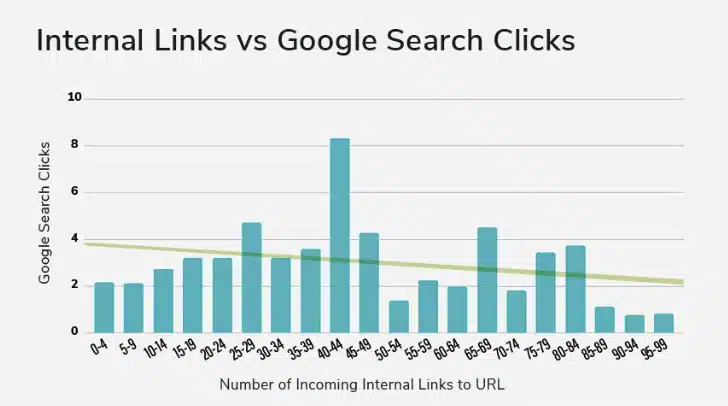
It’s generally understood that external links are more powerful as an SEO Ranking factor than Internal Links.
A recent study by Zyppy in which they analyzed over 23 million internal links across 1,800 websites dispels the overemphasis on external links when comparing internal and external links.
Some of the more significant numbers in the study showed:
- URLs with 0-4 internal links only saw two clicks while URLs with 40-44 internal links saw four times as many.
- After a page receives 45-50 internal links the effect reverses.
So now let’s talk about what’s a good number of links to fill your content on a specific URL.
Authority Hacker ran a study based on which 500k Search Engines Result Pages (SERPs) showed a correlation from the top rank down to the 100th.
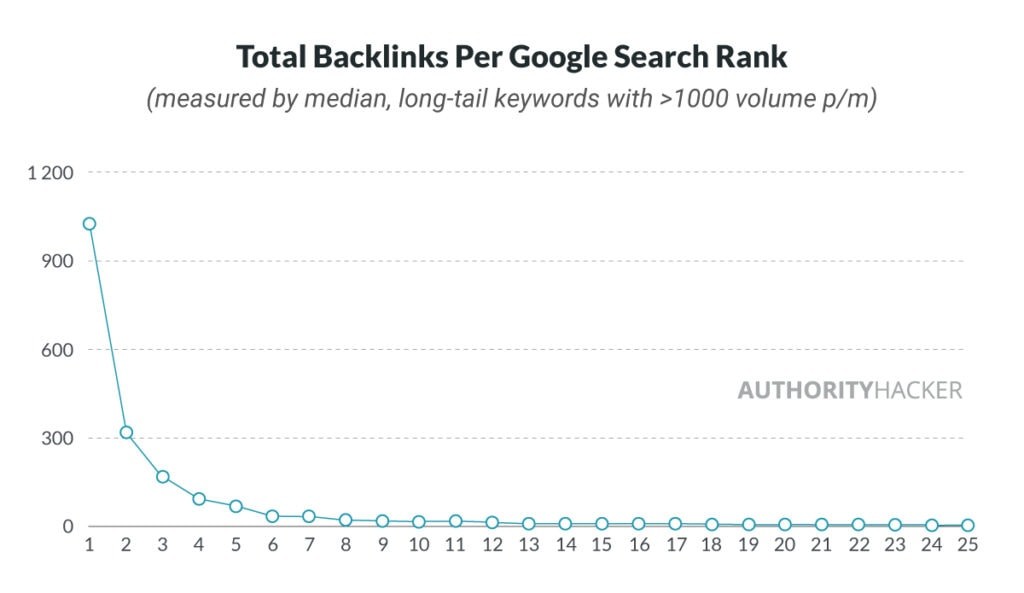
The Median number for the top-ranking results was 85 internal links.
In essence, it’s almost impossible to specify an exact number you should be going for based on the changing dynamics of search engines like Google but these numbers should help you take a start with what should work.
Best Internal Link Structure
Internal linking is motivated and managed not just by SEOs but by a mix of content creators, UX, IT and other factors.
The challenge for SEOs is that it can have a significant impact on your organic search results so having the right internal linking structure of a website is of paramount importance to get things moving in the right direction.
The best practice for internal linking structure revolves around multiple factors. I’ll be walking you through two of the most significant website internal linking structure components.
#1: Be good to your visitors: Ensure you don’t let Google or any other search engine down.
The Search Engine’s end user is the searcher.
If the search engine provides your website a Top SERP and the user bounces quickly from your website that gives a very bad signal to Google that the search engine’s end user did not approve of your website and webpage.
Have valuable content on your website and the right call to action to direct users deeper down to your conversion pages so that Google can assess how engaging your content is and how important your value proposition is to the end user.
#2 Internal Link Juice Flow: Most SEOs understand the significance of external link building and are actively working towards that end.
It is essential to utilize the link authority (Page Authority) that each page builds within your website.
As SEOs, you need to assess which pages have backlinks pointing towards them from external websites and have gained substantial age authority and how you can add internal links on those pages to other relevant content resources on your website to pass link juice within your website structure.
John Mueller on Internal Linking Best Practices

Google has confirmed on multiple occasions that the search engine gives great importance to internal linking.
The confirmation came from John Mueller on Internal Linking Best Practices during one of the office hour sessions where one of the attendees inquired to him whether enabling breadcrumbs is enough for internal linking.
According to John Mueller, internal link building in SEO is “supercritical for SEO” and further continues to be one of the most important elements that help users and Google bots understand the significance of pages within a website.
He continued that internal links by SEOs help mark the most essential pages on the website that are the backbone of the website so that the visitors and Google are guided in the correct direction.
Another significant piece of advice by John Mueller was to utilize internal linking strategically and not add links for the sake of it.
This essentially means websites need to think through their internal linking strategy in SEO so that they add anchor text which are well defined and moves the audience to a relevant page within your website.
SEO best practices for internal linking contextual relative path
A contextual link is any link in the body of text to a relevant site.
It’s the clickable text that you see within articles and blog posts.
Contextual internal link-building might be harder to execute but when done right it is highly valuable.
As a marketer, you need to understand the advantages and how to use contextual links the right way.
It’s the quality and authority of the website that matters.
If your linking is associated with poor websites or is irrelevant as far as the content is concerned; it will have a negative and opposite effect.
What are internal nofollow links?
In 2005, Google introduced the no-follow tag as part of its working ecosystem.
While I don’t recommend using internal no-follow links, there are some cases where webmasters and SEOs might want to utilize no-follow internal links.
#1 Linking to a page with Similar Content: If a website contains multiple pages with comparable content, employing a nofollow tag is an option.
While internal links allow visitors to navigate to other pages, search engines will not index them.
Consequently, the website owner might perceive no benefit in having search engines crawl these links from that particular page and potentially elevate the rankings of the linked pages.
#2 Linking to Low-Quality Pages: When a website owner considers using an internal nofollow link, it might be when they’re linking to a low-quality page—typically one lacking SEO optimization or rich content, such as a contact or privacy policy page.
The concept revolves around the notion that visitors who require access to these pages will actively seek them out, like navigating directly to the website’s Contact Us section.
Consequently, since most users won’t likely search for terms like “Brand A privacy policy,” there’s minimal urgency for such pages to feature prominently in search results.
#3 LINKING TO AN ACCOUNT LOGIN PAGE: In a scenario akin to the one described earlier, a website owner might employ a nofollow tag for an internal link leading to an account login page.
Just as before, the majority of website visitors with login credentials won’t be actively searching for this page on Google.
Additionally, some website owners may prefer not to have their account login pages appear in search results, often due to privacy concerns.
Best Internal Linking Plugins for WordPress
Yoast SEO Internal Links
The Yoast Internal Linking Tool is a powerhouse WordPress SEO plugin designed to supercharge your website’s organic search performance and visibility through strategic internal linking.
At the post level, Yoast Internal Linking ensures that SEO efforts are complemented with thoughtful internal linking strategies.
Within the plugin’s meta box, Yoast SEO conducts a thorough assessment, checking for the presence of internal links within your text and ensuring they are appropriately configured as either follow or nofollow links.
By incorporating relevant contextual links within your webpage content, you can easily earn a green bullet for this crucial check, optimizing your site’s internal linking structure.
The plugin also offers a convenient text link counter tool, enabling you to track both the total internal links within a post and the inbound internal links pointing to it, further enhancing your SEO strategy.
For those looking to unlock even more advanced features, upgrading to Yoast Premium introduces an internal linking suggestion tool. This invaluable resource not only aids in the discovery of orphaned pages but also streamlines the process of implementing internal links across your site.
In summary, the Yoast Internal Linking Plugin serves as an indispensable tool for organizing and optimizing your internal linking efforts, ultimately bolstering your website’s overall performance in the digital landscape.
Link Whisper Plugin for Internal Links
Link whisper is an internal linking building in an SEO automation plugin that uses natural processing language (NPL) technology to scan blog content and offer a wealth of internal link suggestions.
It’s designed for heavy content websites, especially those that are managed by niche site owners or SEO professionals; looking to improve their overall internal link-building strategy.
Some of the key features of Link Whisper Plugin for Internal Links include:
Capability to add automatic links to targeted keywords. The Auto Linking feature builds internal links automatically to a URL of your choice when a given keyword is mentioned on your site.
For example, whenever the keyword “professional SaaS SEO Agency” is mentioned on our content within the website, I want it to link to our page “SaaS SEO Agency – ConvertBunny”.
The Link Whisper plugin then scours our website and links to any mentions of the keyword from past posts or automatically adds a new link anytime the focus keyword appears in future blog posts.
Suggestions by Link Whisper as you write your content. The app uses AI to suggest relevant internal links when you are composing any article within the WordPress Editor.
Internal Link Data Reports. Get complete control over your site structure and help optimize your link-building efforts. The easy-to-navigate data dashboard shows each blog post’s number of inbound and outbound links. In addition, the Link Whisper Plugin for Internal Links gives SEOs and site owners insight into 404 errors and broken links.
Link Whisper Plugin pricing begins at $97 for 1 website annual subscription.
I overall highly recommend Link Whisper for your internal link-building activities especially if you’re a one-man show and don’t have a team of junior SEOs to assist you.
All in ONE SEO Plugin for Internal Links
AISEO is a much more expensive alternative to Link Whisper and Yoast SEO with packages beginning at $299 per annual subscription.
Having said that, now let’s look into some of the core features of AISEO.
AIOSEO provides a Link Assistant feature similar to Link Whisper. Utilize the Links Report to identify pages lacking internal links and conveniently add them directly from the page.
However, the plugin doesn’t offer a built-in link suggestion feature within the WordPress backend for suggesting outbound links while writing. After writing and publishing the article, you’ll need to access the Links Report to discover link suggestions.
What are Internal Linking Checking Tools?
Numerous leading internal link checker tools are accessible for analyzing and optimizing internal links.
These internal linking-checking tools provide valuable insights and features to enhance your website’s performance and fortify its internal link framework.
Let’s delve into some of the top tools available in the market:
Google Search Console
You might be surprised to know but there is a feature within Google Search Console that can completely up the ante as far as your internal link-building game is concerned.
The data points are super easy to access and make it much easier to locate a goldmine of internal link opportunities.
I’ll be walking you through how to find internal linking opportunities with Google Search Console (GSC).
All you need to do is scroll to the bottom of your GSC interface and select the “links” tab.
Once you’re in, you’ll see a few metrics including top externally linked pages, top internally linked pages, anchor text and linking domains.
We’ll focus just on internally linked pages to be spot on in how to build internal links through Google Search Console.
The first important thing is to find orphaned pages in GSC.
To find these pages, just load up the top internally linked pages tab use the internal link filter and sort it from lowest to highest.
You will need to use internally linked pages as your linking foundation.
In most cases these pages have the most internal link equity, you’ll want to use them to distribute that equity across your website.
This could be pointing to a low-hanging fruit page that could see a direct benefit from additional links.
SEMRUSH
Internal link audits are critical in site design if you want your website to be indexed by search engines like Google.
To help you identify errors concerning internal linking on your website and find ways to fix them, SEMRush has an Internal Linking Report within Site Audit.
Here are the core features of SEMRush Broken Link Checker and Audit tool that will guide you on how to find internal links on SEMRush.
Internal Linking Report: To access this report, simply head to the project you would have set up in SEMRush and click on the “View Details” button. On the next screen, you’ll be able to view all the information on your website’s link architecture on one page.
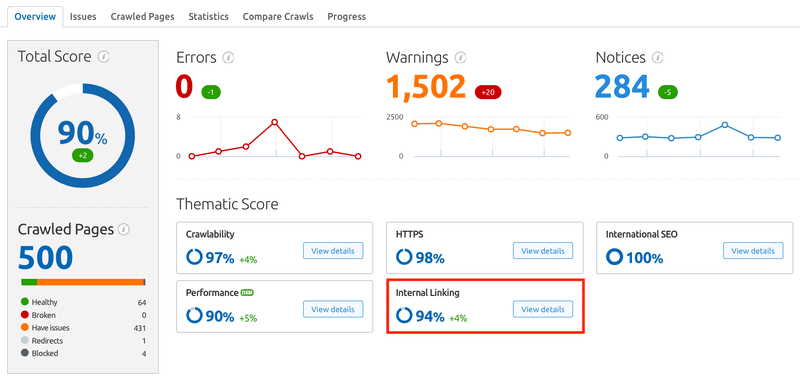
Internal Link Rank: SEMRush has developed an Internal Link Rank (ILR). This feature measures the importance of your website pages in terms of link architecture. ILR takes into consideration all internal links and pages they lead to and gives you a data-backed idea of how strong a page is concerning internal link building in SEO for your website.

Internal Link Issues: This section of the SEMRush auditor shows you information regarding all the internal linking issues and how to fix them.
Pages Crawl Depth: The Page Crawl Depth shows your link architecture and the ease of accessing your web pages from the home page.
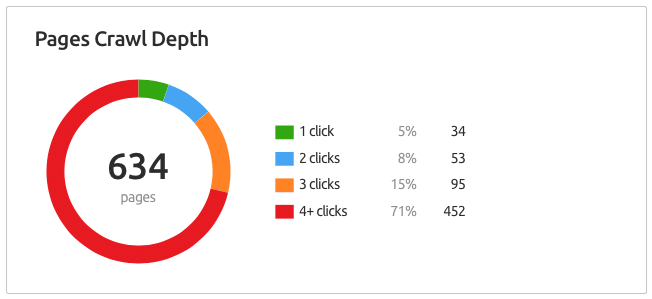
There are other features in this internal linking checking tool as well including a graph showing distribution of internal links across the website, internal link distribution, report for pages passing the most Internal LinkRank Value (ILV).
Based on our experience we firmly vouch for SEMRush as the SEO Internal Links Site Audit<span style=”font-weight: 400;”> app of choice in 2024.
Ahrefs
With the Ahrefs Internal Link Checking Tool, you can see the internal links on the target domain, URL or subsection.
Some of the most prominent features of Ahrefs Internal Audit Tool include finding Google Nofollow Internal Links.
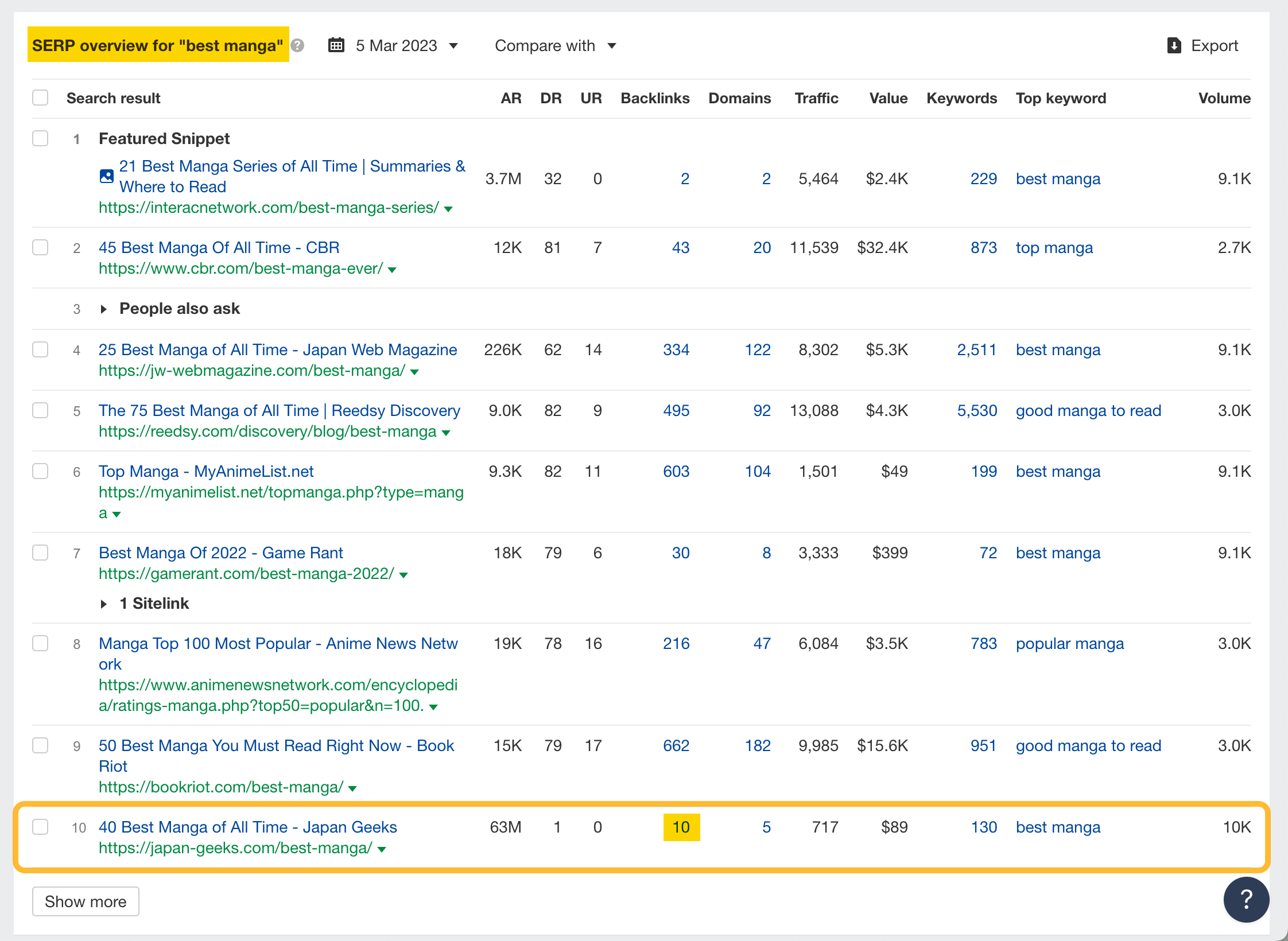
Nofollow links block Google from crawling content on your site and in addition, prevent the passing of SEO internal link juice.
You can simply find them by adding a nofollow filter.
Once you have the complete list with you all you have to do is go to your Content Management System and make the necessary fixes of nofollow attributes in outgoing internal links.
Furthermore, with Ahrefs you can find broken or redirected pages without having to run a specific SEO Audit Crawl.
All you have to do is apply the target HTTP code filter and select either 404 not found or 3xx error.
Finally, just make the necessary fixes and clean them up!
You can even assess if the top-ranking pages are ranking due to internal links.
If you see a page ranking well in organic search results with limited backlinks, this might be due to a strong internal link profile.
All in All, Ahrefs is a very handy Internal Link Checking Tool and we at ConvertBunny highly recommend it for internal link-building in SEO.
Screaming Frog
By now you do understand the significance of internal link building in SEO.
So if you want to take a deeper look at your current status i.e. your internal linking structure, a little SEO internal link site audit can go a long way.
How to check internal links in Screaming Frog?
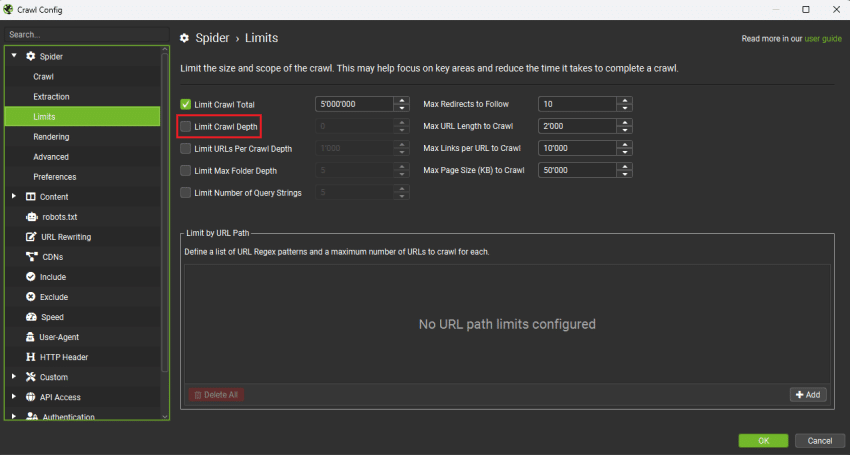
You can find deeply buried pages with a crawl depth analysis in Screaming Frog.
As discussed earlier, the number of clicks it takes to reach the home page determines the link depth or crawl depth of that page.
Generally, a link depth of 1-3 is considered good to go.
Here is how you can calculate the crawl depth of each page in the SEO Spider.
- Make sure you don’t restrict link depth.
- Go to Configuration > Spider > Limits. Make sure you don’t set limits on the crawl depth or folder depth, otherwise you might miss out on problematic pages.
- For bigger websites consider splitting your crawl up in segments to not strain your computer’s processing capability.
- Now go ahead and run the SEO site audit crawl.
- Navigate to the internal tab or the Links tab and look for the column called Crawl Depth.
- Ideally, we would recommend setting the sort from high to low.
- You can even export the list into Excel or Google Spreadsheets.
Even though crawl depth is one great feature for internal linking in Screaming Frog; that’s not all.
Screaming Frog boasts a host of additional features including the capability to find poorly linked pages using internal link counts, find internal link opportunities with Screaming Frog, find orphan pages and locate all non-descriptive anchor text across your website.
We must admit that Screaming Frog is one SEO Tool that you should have in your SEO Stack if you’ve understood the importance of internal link building<span style=”font-weight: 400;”> and want actionable advice on how to do it.
What are broken internal links?
Broken Internal Links point to a non-existent page on your site.
Internal links are considered broken when they point to a webpage that returns an error, can’t be found or no longer exists within the website structure.
Broken links can easily go off the radar depending on how many and how diverse the stakeholders working on your website are.
Some of the primary reasons for broken internal links include when the requested page has been removed, there is a typo in the URL or during a site migration the URL Structure has been modified.
How to find broken internal links
SEOs and site owners can find broken links through manual checking, utilizing broken internal link checkers including SEMRush, Ahrefs or Screaming Frog and through CMS-specific solutions (like plugins).
How to fix broken internal links?
Here is how to fix internal broken links on your website:
- Redirecting Links: Deploying 301 redirects is the most effective way of fixing broken links. The good thing about 301 redirects is that they still pass PageRank to the redirected pages.
- Removing or Replacing Links: In certain cases 301 redirects are more laborious and all you need to do is identify broken links using SEMRush, Ahrefs or Screaming Frog and simply replace the URL with the correct updated URL.
Internal Links vs External Links
In this guide, we’ve covered in detail what internal links are, why they are important and how you can make use of SEO best practices to maximize your internal linking potential.
Here is a set of key differences between external and internal links.
|
External Links |
Internal Links |
|
They are difficult to control and obtain. |
These are easy, fast and free to control. |
|
These normally can only appear in the content part of the website. |
These can be applied both in the navigation and the content of the website. |
|
External Backlinks pass SEO authority from one website to another, increasing your domain authority. |
Internal Links pass authority within your website and web pages only. |
|
External Backlinks can be acquired via paid placement, guest posting, link insertion, ABC Exchanges and other techniques. |
Internal Links can be placed by a site owner at his own discretion. |
| It will in increasing referral traffic to your website as well |
It helps in improving your internal web page visibility and also improves your page rank due to which web pages appear higher on search engines. |
How to track internal links in Google Analytics?
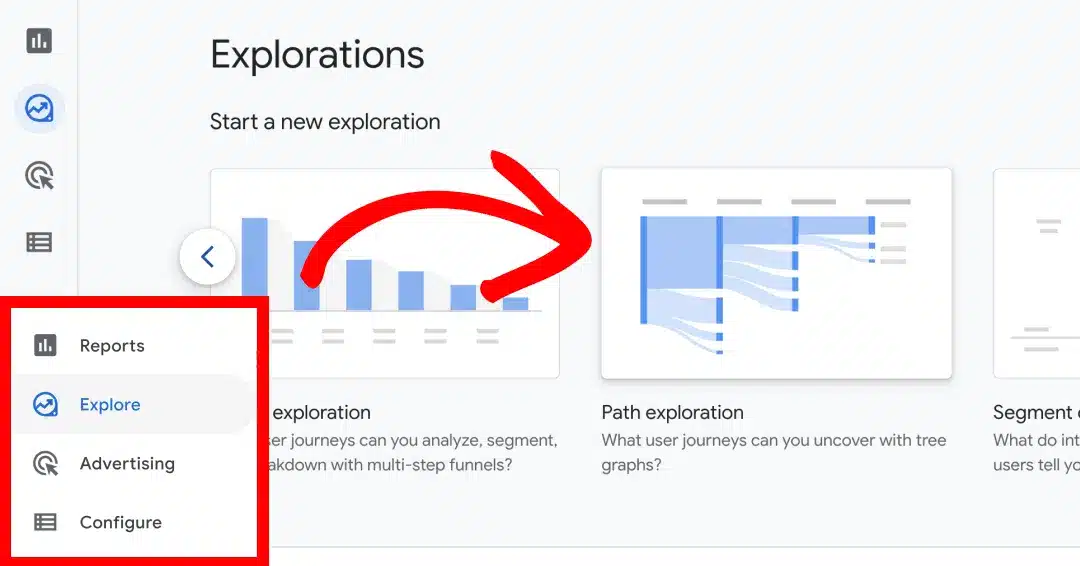
SEOs, analytics teams and site owners are always conscious about website and performance data.
No wonder so many SEOs ask about the best way to track internal links in Google Analytics.
The most suitable method is to track internal links with Path Exploration in Google Analytics.
Simply navigate to analytics.google.com and go to Explore > Path Exploration.
Below the STEP 1 column, simply select the page title and screen name in the drop-down.

In the Step 1 Column, you’ll spot internal pages visited by their page titles with the number of page views.
You can even click on the Event Name to change the Starting Point in the first column to any event you wish to start from. The default starting point in Google Analytics 4 is sessions_cart.
How to find internal linking opportunities?
There are a whole host of steps you can take to build your internal link equity across your website.
Here are the top internal linking opportunities you need to keep an eye on:
Internal Anchor Texts do matter for SEO
In a recent video with John Mueller we discovered that just like external link anchor texts, internal anchor text helps Google understand what the linked pages are all about.
Similarly, the context around the internal link is secondary, the anchor/link text is a much more significant signal.
Implement Breadcrumb Navigation
Breadcrumbs serve as a navigational aid, facilitating both users and search engines in grasping the structure and hierarchy of your website.
This navigational feature showcases a trail of links, elucidating the pathway to the current page within the website’s framework.
Breadcrumbs prove advantageous for websites with intricate structures or extensive content by aiding users in navigating and comprehending the website’s layout.
However, for websites with simpler, linear, or minimalist designs, implementing breadcrumbs may seem superfluous and potentially clutter the interface.
There exist three primary types of breadcrumbs:
- Hierarchy-based breadcrumbs: These illustrate a page’s position within the site’s structure. Employ them for websites with multi-level layouts, enabling users to easily backtrack to higher-level categories.
- Path-based breadcrumbs: These trace the user’s journey through the site, which is particularly useful for websites where users are prone to following diverse paths to reach a page.
- Attribute-based breadcrumbs: Frequently utilized in e-commerce websites, these breadcrumbs display attributes such as brand, category, or size.
Breadcrumbs enhance your site’s crawlability and furnish clear pathways for search engines to comprehend the hierarchy and organization of your content.
Prevent Cannibalization with Internal Links
Keyword cannibalization arises when multiple pages within your website vie for the same keywords, thereby diminishing each other’s potential to rank in search results.
Employing internal linking strategically can help alleviate this issue.
Utilize internal links to establish a hierarchical structure among pages.
Direct links from less significant pages to the most pertinent or authoritative page for a specific keyword, signalling to search engines which page should be prioritized for ranking higher in association with those terms.
In cases where you have multiple pages addressing similar topics, consider interlinking them and, when appropriate, merging them.
This approach can consolidate the SEO value of these pages while also enhancing navigation clarity for users.
To identify instances of keyword cannibalization on your website, utilize tools such as Screaming Frog’s SEO Spider Tool.
By scrutinizing page titles, meta descriptions, and headers, Screaming Frog can pinpoint pages that compete against each other, enabling you to devise more effective internal linking strategies.
Your overarching aim is to guide search engines toward the most relevant page for specific keywords and mitigate competition among different pages on your site for rankings.
Link to and From Content-Heavy Pages
Effective internal linking establishes robust connections between articles, fostering a cohesive internal linking structure that delves deep into the site.
When your site boasts sound architecture, it naturally includes ample links to essential pages like the homepage, About page, and Contact page.
Further linking to these pages is unnecessary.
Of course, when appropriate, linking to conversion-driven pages such as squeeze pages or sales pages can be advantageous.
Primarily, I advocate for creating links within and among long-form articles. This approach organically distributes internal linking throughout your content.
Add an Appropriate Number of Links Per Page
Is there such a thing as too many internal links? Absolutely.
According to Google’s John Mueller, an excess of internal links can diminish their effectiveness.
A Zyppy survey elaborates on this point, indicating that while more internal links are correlated with higher traffic, there’s a threshold. The survey discovered that URLs containing 50 links or more saw a decline in traffic.
When determining the appropriate number of links for a page, consider your audience’s expectations. I recommend starting with a minimum of 5 internal links and adding more as necessary.
Additionally, remember to account for header, footer, and menu links when tallying the on-page link count.
Update Old Articles With New Internal Links
To maximize the impact of internal linking, consider coupling it with another effective SEO technique: refreshing old content.
By updating outdated content, you prompt Google’s crawler to revisit and reindex it, potentially leading to improved rankings in the SERPs.
Consistently refreshing old articles is a practice I strongly advocate. Below is a recommended process for revitalizing your older blog posts:
- Introduce fresh content at the beginning, outlining the updates made.
- Sprinkle additional paragraphs throughout, incorporating new or revised information.
- Remove or substitute outdated statistics or facts.
- Incorporate multiple internal links to recently created content.
- Place links strategically where they naturally enhance the reader’s experience and provide additional value.
Regularly Audit Internal Links
Conducting regular internal link audits serves as a crucial step in maintaining the health and effectiveness of your website’s content strategy.
Beyond just addressing broken links and outdated references, these audits significantly contribute to enhancing the overall user experience.
One often overlooked aspect of these audits involves identifying and rectifying unnecessary redirect chains.
By streamlining these redirects, you not only improve page loading times but also mitigate potential frustrations for users navigating your site.
Tools such as ScreamingFrog are invaluable for this task, efficiently identifying broken links and conducting thorough audits for redirects, ensuring a seamless user experience.
Moreover, internal link audits unveil new linking opportunities, allowing you to reinforce internal linking best practices and identify orphan pages—those devoid of any links.
This holistic approach ensures that your website’s architecture remains robust and user-friendly.
To maintain the vitality of your internal linking strategy, I recommend conducting these audits every four to six weeks.
This proactive approach not only safeguards against potential issues but also fosters continuous improvement in your website’s performance and user satisfaction.
FAQs – Internal Link Building in SEO
The orphan page has no incoming internal links
An orphan page is a webpage on your site that lacks internal links pointing to it.
This makes it difficult for both search engines and users to discover the page, potentially resulting in wasted content creation efforts over time.
Orphan pages can arise due to various reasons, such as website updates, deletion of linking content, or oversight in creating internal links after publishing.
These pages are detrimental to SEO because internal links aid search engines in navigating and comprehending the site’s structure.
Without internal links, a page’s authority and visibility in search results diminish, leading to a potential loss of organic traffic.
In essence, neglecting internal linking leaves valuable SEO opportunities untapped.
Using the same internal link twice in a blog post
When it comes to utilizing the same internal link multiple times within a blog post, it’s entirely permissible. As long as you’re employing tags or HTML anchor elements instead of frames, you have the freedom to diversify your presentation across various contexts.
This flexibility allows you to showcase your content in different ways, enhancing its visibility and impact. The best part? You can experiment with different presentations of your products or content without any concern about adverse effects.

